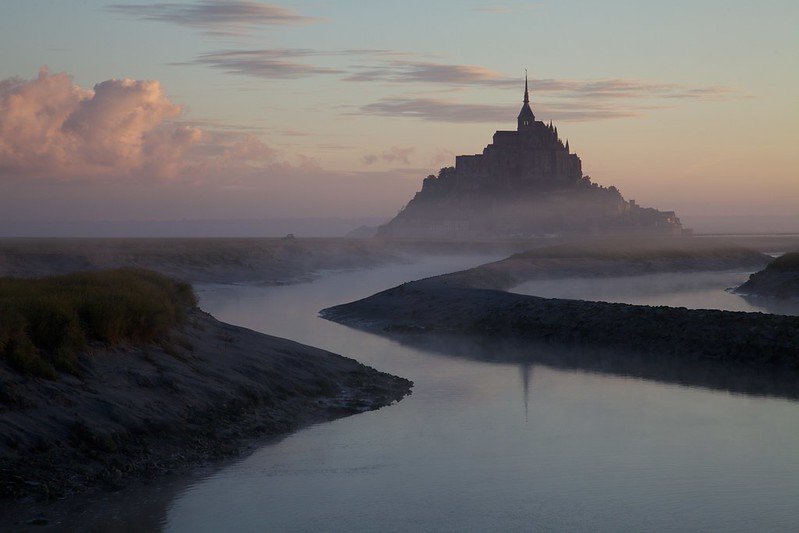There has been something of an exodus from Paris following the pandemic in France. A migration. Not that the Parisians have left their city behind, rather they’ve spread out their wings and what it means to be a Paris native.
There is a popular new cycleway from Paris, the city of light, to the fabled Mont-St-Michel, the holy city on an outcrop of rock amid an inhospitable tidal bay. Both are destinations in their own right, but along the way there is a wealth of culture to explore in the cities, towns, and villages in between.
Running along the border of the Pays-de-la-Loire with its historic châteaux, and Normandy, known for the WWII events of D-Day and the Allied invasion, the route will take you through the Normandie-Maine National Park, peppered with ancient legend and a thousand years of history.
Alençon
On the edge of the Normandy-Maine National Park is the lace town of Alençon, where the French generals regrouped ready for the final Allied advance on Paris. The château was used by the Nazi Gestapo during WWII, its ruined gardens recently renovated to include a children’s playground, which does nothing to soften the severe stone edifice. The castle is still used as a prison today.
Riding in through the suburbs, lined by strip malls and housing estates, the Medieval town center comes as a pleasant surprise. Alençon is my favorite small city that no one has ever heard of. Its half-timbered buildings host coffee shops, pizza restaurants, and any number of boutiques. Since the pandemic the town has become known as ‘Little Paris’ as the denizens of the capital continue to migrate.
There are any number of ‘incomers’ here; the Parisians are simply the latest wave, following the Turkish and British. When people get excited about boats filled with the desperate crossing the Mediterranean they fail to see that people have been moving in this way for centuries, everywhere.
Lalacelle
Although it is a tiny dot on any map, Lalacelle is worth a mention for several reasons. One is the new cut-and-cover tunnel, built to take cyclists under the busy National 12 road. I spent many years working in the construction industry and can be forgiven for nerding out over concrete.
Next to the tunnel is a Logis restaurant and a press selling local ciders. Yes, this is apple country. On the ride one passes through hundreds of orchards with many different varieties of fruit. Some will be edible, but cider apples can be bitter, so be careful.
But the real reason for coming to Lalacelle is that the migrant population has risen recently, and you might be tempted to join them.
Just to the West of the cycle route is the Château de Lalacelle, a 19th-century wool merchant’s country retreat currently being renovated into holiday apartments by an ambitious British family. They expect to be ready for visitors in 2024, but if you happen to be passing drop in and say hello.
Abandoned for decades, the chateau is gradually being brought back to life. There are chickens in the yard, and a pair of peacocks, just because. But this family project is unusual in its scope and ambition. Many other dream-chasers have lost everything.





